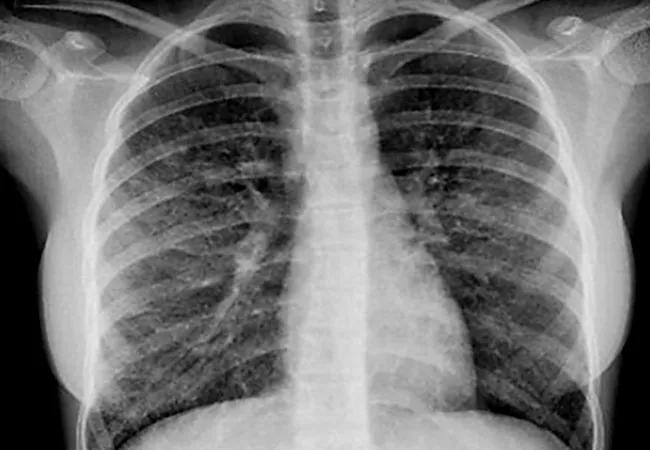Abstinence from combustibles, dependence on vaping

Editor’s note: This is an abridged version of an article originally published in the Cleveland Clinic Journal of Medicine. The article in its entirety, including a complete list of references, can be found here.
Advertisement
Cleveland Clinic is a non-profit academic medical center. Advertising on our site helps support our mission. We do not endorse non-Cleveland Clinic products or services. Policy
By Humberto K. Choi, MD, Jorge Ataucuri-Vargas, MD, Charlie Lin, MD, and Amanda Singrey, PharmD
Tobacco use continues to be a major public health problem and a major risk factor for deaths from heart disease and several types of cancer such as lung, head and neck, and colorectal cancers. The prevalence of smoking has declined over the last six decades, to an all-time low of 13.7% in adults in 2018. However, nicotine dependence is still considered a common and significant clinical problem.
A number of effective therapies exist, yet treating patients for tobacco cessation remains a challenge, not only for patients, but also for clinicians, who may not be aware of effective therapies available and may fail to offer treatment. Therefore, it is important for clinicians to familiarize themselves with treatment options they can offer to every smoker.
In this article, we review the use of e-cigarettes. Previous articles addressed behavioral and pharmacological interventions as well as clinical opportunities to encourage tobacco cessation.
E-cigarettes have been proposed as a method to reduce the harms of tobacco use and as a nicotine replacement product. However, e-cigarettes can also cause nicotine dependence, so users may need treatment for nicotine dependence similar to that for tobacco users.
E-cigarettes have been promoted as safe alternatives to combustible cigarettes, and they have been studied in randomized controlled trials as a treatment for tobacco cessation.
One randomized trial compared nicotine-containing e-cigarettes with NRT. The e-cigarette group abstinence rate was 18% at 12 months, though 80% continued use of e-cigarettes, compared with a 9% abstinence rate in the NRT group and a 9% rate of continued use of NRT.
Advertisement
Although e-cigarettes were beneficial in achieving abstinence, the concern is that individuals continued to use them. It is not clear whether e-cigarettes truly reduce harm as they are not as safe as they are promoted to be. While nicotine inhalation with e-cigarettes is thought to release fewer toxic by-products than combustible cigarettes, there are concerns regarding their safety. Carcinogens and toxins have been found in the liquid used for vaporization and in the aerosols emitted, and e-cigarettes have been associated with an outbreak of cases of acute lung injury that caused hospitalizations and even deaths.
The long-term consequences are unknown, but several studies have shown the potential of e-cigarettes to cause chronic lung and heart disease and to increase the risk of infection and of cancer.
The potential for nicotine addiction with e-cigarettes is also concerning. Pod systems (e.g., JUUL brand) are popular devices that can deliver high concentrations of nicotine through the use of nicotine salts. For example, each JUUL pod may contain a nicotine concentration of 3% (equivalent to 35 mg/mL) or 5% (equivalent to 59 mg/mL). A combustible cigarette has a nicotine concentration between 1.5% and 2%. It is worrisome that e-cigarette users are often unaware of or underestimate the nicotine content.
It is not clear whether nicotine dependence from e-cigarette use should be managed differently than that from combustible cigarette smoking. Because the addiction is to the same substance, it is likely that the same strategies and tools could be applied with careful attention to the unique aspects of e-cigarette use.
Advertisement
The pattern of use with e-cigarettes is different. An e-cigarette does not need to be lit; it can be used any time and with a potentially higher frequency than combustible cigarettes; and nicotine concentrations can be higher in e-cigarettes. Thus, this pattern of use can pose a higher risk of withdrawal symptoms.
This highlights the need for clinicians to familiarize themselves with different e-cigarette products and their nicotine content, as well as the need for further investigation into whether higher doses of NRT are necessary in these patients.
Another important aspect is the high prevalence of e-cigarette use among adolescents. Adolescent e-cigarette usage is now a major public health concern, with one in every six high school students reporting current e-cigarette use.
Treatment options for adolescents are more limited than those for adults. Neither varenicline nor bupropion has shown benefit in the adolescent population based on limited studies of nicotine dependence associated with combustible cigarettes. NRT combined with cognitive-behavioral interventions has been shown to be effective in adolescent cigarette smokers. However, further research is needed to determine the most effective treatment of nicotine dependence in adolescents, especially when it is associated with e-cigarette use.
Nicotine dependence is a chronic relapsing disease. Every tobacco user should be offered treatment for tobacco cessation regardless of their level of readiness to quit.
Treatment should be based on the severity of nicotine dependence, the probability of developing withdrawal symptoms, risk of relapse, comorbidities, local resources, and patient preferences.
Advertisement
Comprehensive tobacco treatment that combines pharmacologic and behavioral therapy significantly increases successful tobacco cessation. Although there are many popular alternative treatments, they should not replace or delay the use of known effective therapies.
E-cigarettes have been proposed as a method of reducing the harms of tobacco use, but they also can cause nicotine addiction. Moreover, their effectiveness in tobacco cessation treatment has not been determined, and concerns related to their safety preclude their use in tobacco cessation treatment at this time.
Advertisement
Advertisement

Essential prescribing tips for patients with sulfonamide allergies

Confounding symptoms and a complex medical history prove diagnostically challenging

An updated review of risk factors, management and treatment considerations

OMT may be right for some with Graves’ eye disease

Perserverance may depend on several specifics, including medication type, insurance coverage and medium-term weight loss

An historical view of the disease

Key findings and clinical takeaways

12 reasons people give for not wanting the influenza vaccine